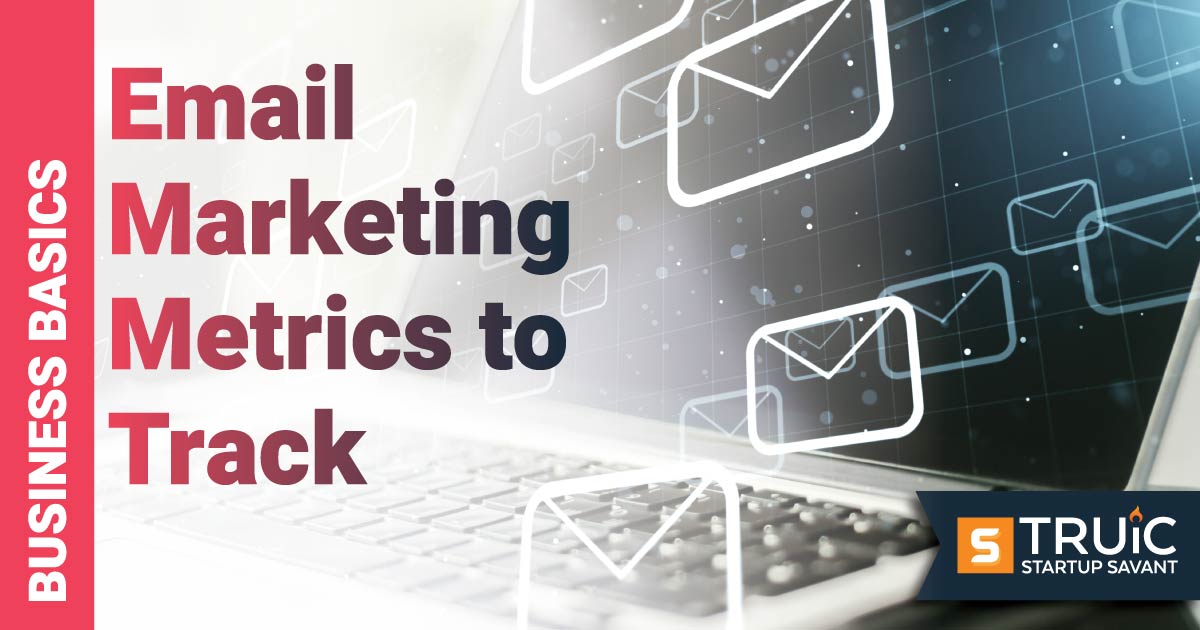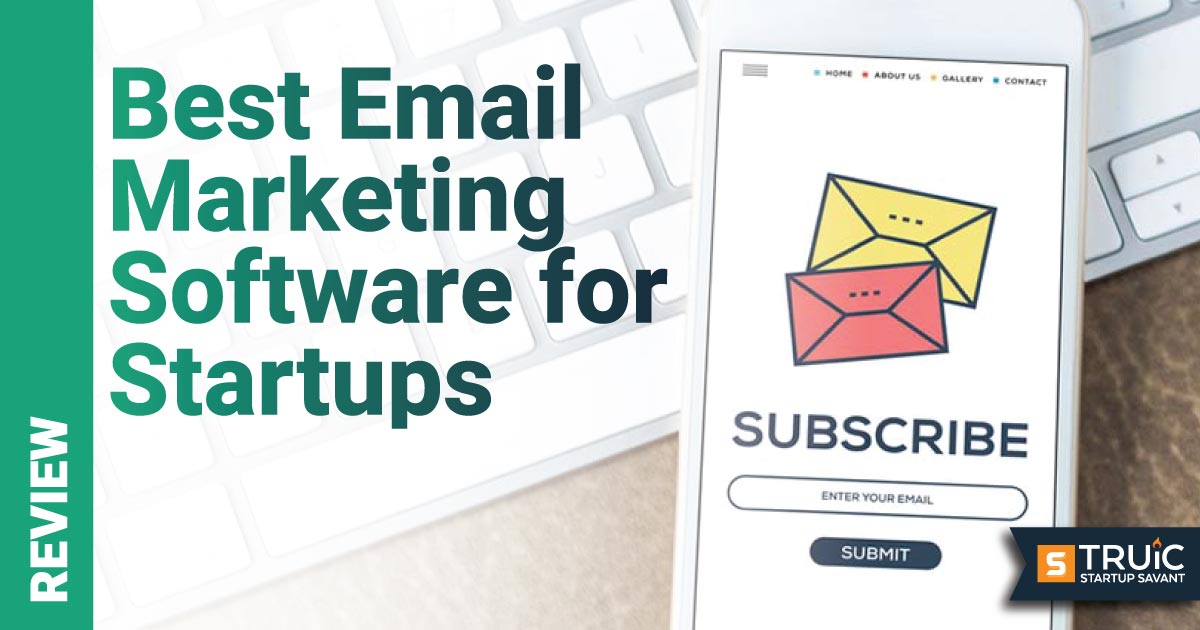These Are the Most Important Email Marketing Metrics to Track

Last Updated: By TRUiC Team
Email marketing is one of the most important tools that a business can use to connect with its customers. However, if you're not tracking the right metrics, you won't be able to make data-driven decisions about your email marketing campaigns.
Below, our guide discusses the most important email marketing metrics and how to track them.
Recommended: Check out our review of the best email marketing software for startups.
Email Marketing Metrics to Measure Success
With the right data in your hands, you'll be able to understand the full story behind your email marketing campaigns. Real-time decisions become easier to make and aligning your campaigns with your long-term goals falls into place naturally.
Here are the most important email marketing metrics to track and what your business needs to focus on for each one.
1. Delivery Rate
Delivery rate is a calculation that considers the number of emails that actually land in your audience's inbox versus the total number of emails you send. When you create a campaign and blast it out to your entire audience, there is a good chance some of those emails might bounce. A bounce happens when the email address that has been provided is no longer valid for whatever reason.
The larger your list grows, the more you need to maintain it by removing the email addresses that are no longer valid. If you fail to do so, you run the risk of your sender reputation lowering and email filters flagging your account as spam or promotional. Tracking your delivery rate is essential to having a high deliverability, which is where your emails are landing. If you want your emails in the main inbox of your audience, you'll need to be diligent in keeping a low delivery rate percentage.
2. Unsubscribe Rate
Ideally, people join your email list because they are interested in something you have to offer and want to know more about your business. Whether that be your product, service, or lead magnets like a case study or guide. The hard truth is, though, most people only join an email list to get a freebie or special offer.
That's why tracking your unsubscribe rate is important, so you know how many people are opting out of your emails after signing up. If you notice a high unsubscribe rate, that probably means there are some changes you should make to keep them engaged, such as providing more relevant content or providing more value. As your list grows, you will always have a few people unsubscribing from your list, but you should always work to lower the percentage as much as possible.
3. Spam Rate
The spam rate is incredibly important to the overall health of your email marketing campaigns. Email services build filters that track specific parameters to determine if an email falls under the spam category. If too many of your emails get flagged, all subsequent campaigns could be sent directly into your audience's spam folder.
The good news is there are actions you can take that directly affect your spam rate. For starters, never buy an email list from any service, as these are more than likely invalid addresses. Also, avoid using words that are commonly associated with spam emails, such as “free” or “guarantee.” Research other best practices for email marketing to give your campaigns the best chance at success. To make it easy on yourself, use an email marketing tool that will flag emails before you actually send them, giving you a chance to make critical changes.
4. Bounce Rate
Similar to the delivery rate discussed above, the bounce rate is a metric that tracks the number of emails that never make it to an inbox due to invalid email addresses. As your list grows, you must be diligent in keeping track of bounces and removing email addresses from your list if needed. The more bounces your campaigns have, the lower your overall sender reputation score will be. Email services use this score to determine if your account is promotional or spam.
The best action to take when tracking bounce rates is to create a system where you cleanse your list periodically throughout the year. Obviously, if you notice high bounce rates in a particular month or week, you should take immediate action. Most email tools will come with a bounce tracker that automatically offers to get rid of invalid email addresses for you.
5. Open Rate
Up until now, this list has focused on metrics that could have significant negative consequences not only on your campaigns but on your actual email account. Open rate, however, provides an opportunity for growth. This metric is calculated by taking the number of people who opened your email divided by the total number of emails sent. Low open rates are to be expected when you are just starting out because you don't have enough knowledge on how to engage your audience.
Over time, you'll learn better techniques for writing subject lines and creating offers that your audience actually wants. When you fully understand what your audience is looking for and can deliver that in an email, your open rates should see a positive influence. Tracking open rates is the first step to seeing significant growth in your campaigns and leads directly to an equally important metric: click-through rates.
6. Click-Through Rate
The biggest factor in whether or not your email campaigns will be profitable is the click-through rate. When a contact on your email list opens your email and actually clicks on the link you have added to the content, this counts as a click-through.
Think of your email campaign as a funnel. The very top of the funnel is how your emails are being delivered. If they land in the main inbox tab, then you’ve reached the next step: the open rate. If you get enough people to open the email, you go to the next lower ring of the funnel, the click-through rate. Once you have a large portion of your audience clicking through your emails, you can focus on another medium, like your website or sign-up conversions. Click-through rate is the last step in creating a successful email campaign and is necessary to get the best results.
Best Email Tracking Tools
Manually tracking all the crucial metrics above would be incredibly time-consuming and unrealistic for large email lists. Instead, you'll need an email tracking tool that can automate most of the process and even provide some insights along the way.
Here are all the best tracking tools to implement in your email marketing strategy.
1. HubSpot
HubSpot does it all when it comes to email marketing. The company started as an email tracker but now has branched out to include marketing automation, CRM, and a lot more. When it comes specifically to tracking email performance, HubSpot provides insights on open rates, click-through rates, bounces, and unsubscribes. The tool is incredibly comprehensive and scales easily with your email list as it grows.
The major downside to using the platform is the high costs. Because the tool has so many features businesses can use at all levels, the cost is understandably higher than other platforms. You won't need any designers or coders to create and develop complex email marketing campaigns all within one dashboard. If you have the budget, there is no question this is one of the best email platforms available.
2. Mailchimp
Mailchimp has been around since 2001 and is one of the most popular email tracking tools on the market. With over 15 million users, it's also one of the oldest services available. Not only do you get all sorts of metrics to track your campaign's performance, but Mailchimp also has a wide variety of templates from which to design your emails. The tool is user-friendly and intuitive for even first-time users, so you can get an email campaign up and running within a day.
Automations in the platform allow you to have most of the work done for you, while artificial intelligence offers suggestions on your campaigns that can help optimize key metrics like open rates, bounce rates, and click-through rates. There are also advanced features like segmentation which helps personalize emails, making them more engaging for your audience. If you don't have a large budget for HubSpot or the technical know-how for Mailgun, Mailchimp is the perfect combination of both that increases your chances of a successful email marketing campaign.
You can learn more by reading our full Mailchimp review.
3. Mailgun
Mailgun is slightly different in how it functions compared to other popular services like Mailchimp or HubSpot. For starters, the platform was built with an API-first mentality to make it easy to integrate into a number of tools. This means you can connect Mailgun to your web forms so that when you collect emails, you know they are valid, and you won't risk a high bounce rate.
The deliverability feature tracks any size list from hundreds to millions of emails a month. You won't have to worry about whether your emails are being delivered to the spam folder or promotional folders with insights from Mailgun. The tool is best for entrepreneurs with some background in coding or at least has a coder available for help. If you don't have the technical background, the tool may be hard to implement in your campaigns.


